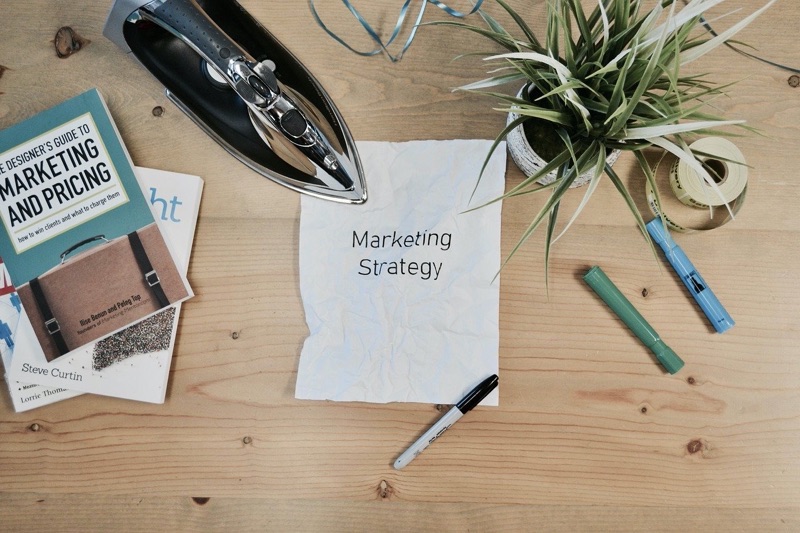There’re three groups of consumers on the internet.
The first group learns about products and services online and visits the location of the merchant to buy.
The second group finds products and services offline and use the web to learn more and compare prices.
The third group discovers products and services on the web. They sign up for the merchant’s newsletter and continue to learn more. And down the line, they decide to buy the product or service.
With an effective marketing automation strategy, you’ll be able to convert all these groups of consumers. In this article, you’ll learn the right way to use marketing automation to win more customers for your business, no matter your niche or industry.
What is marketing automation?
Marketing automation is a technology that does three things:
- It allows you to track each prospect’s interaction with your company.
- It gives you data that allows you to send personalized marketing campaigns to your prospects and customers.
- It enables you to tie the outcomes of your marketing campaigns to specific revenue-generating opportunities.
Marketing automation lets you provide a great marketing experience to customers.
Examples of marketing automation
Nissan collects relevant information from customers when they buy Nissan cars. For example, they store the purchase dates customers bought their cars.
Nissan automatically sends an email after six months the car was purchased, asking the customer to schedule their first maintenance appointment.
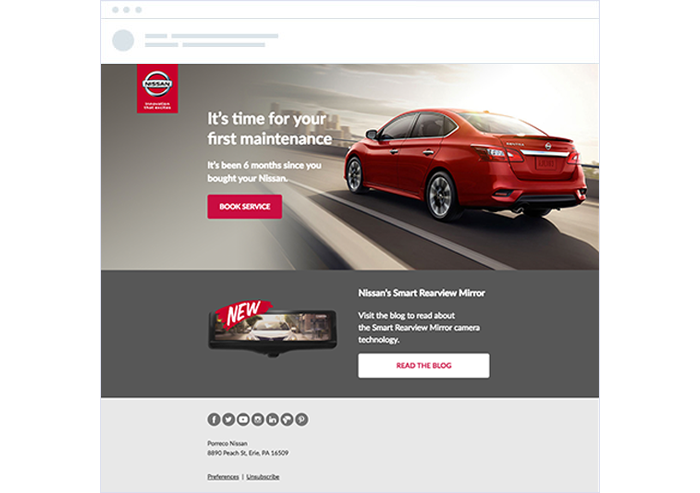
Nissan generates a huge percentage of its revenue from maintenance fees.
This is a perfect example of marketing automation. It would be tough to send reminders to each customer every six months manually.
Squarespace, one of the world’s most popular website builders, sends an email message that offers 10% discounts to users who started their free trial but didn’t become customers.
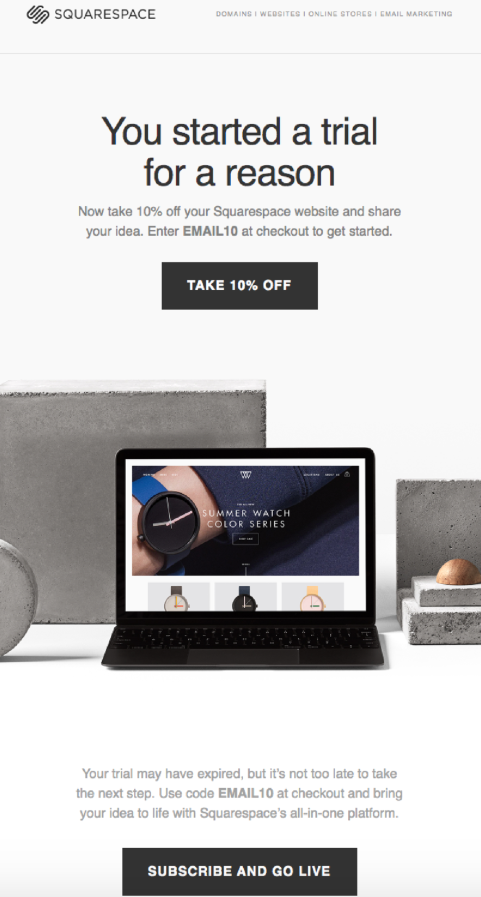
Without marketing automation, it would be difficult to send discount offers to users who didn’t become paid customers after their free trial has ended. And manually sending this message to each user would be time-consuming or impossible.
And here’s another marketing automation example:
Casper sells its award-winning mattresses through its website. A few days after buying their sheets, Casper sends an email asking for a review.
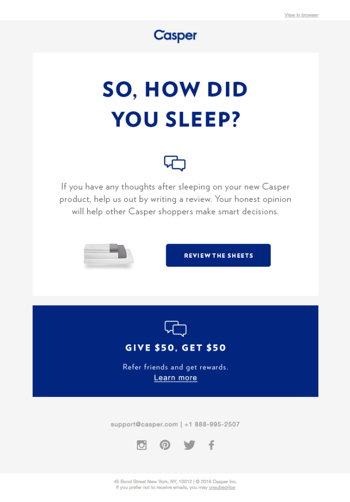
Steps to Creating the Perfect Marketing Automation Strategy
For you to do marketing automation the right way, and get great results, you need to follow some important steps. Companies that follow these steps find it easier to win more customers and make marketing automation work well for their business.
So, what are these steps?
State your goals
Without goals, it’s hard to know if your marketing automation campaigns are working.
What do you want to achieve with your campaign? Do you want to increase brand awareness, engagement, or leads?
You should know the answers to these questions before you start an automation campaign.
Marketing automation can help your business in many ways. You want to ensure that you’re getting the most value as possible from the resources and time you invest in each automation campaign.
Let’s assume that Twitter and LinkedIn are the right channels for your business. You should use automation to increase your followers, reach, and engagement on those platforms.
A tool like OmniKick can help you turn your website’s visitors into social media followers. You can use the tool to create a popup where you ask visitors to follow you on social media.
Buffer is another automation tool you may want to use to schedule your posts on Twitter and LinkedIn. Use Buffer to schedule and spread your updates throughout the day.
Know who you want to target
Marketing automation is only effective when you know your customers. Don’t target everyone and expect automation to work.
For example, OmniKick lets you create high-converting popups that help you collect visitors’ email addresses on your website.
But each popup shouldn’t target everyone that lands on your site.
Let’s assume that you sell multiple fashion products like shoes, wristwatches, and bags. A prospect who visited the shoe page may not be interested in buying bags.
So, you may create a popup that targets shoppers who want to buy shoes. OmniKick lets you create unique popups for certain pages on your site.
After choosing the type of popup you want to create, and you’re inside the Funnel Editor, click “Display Rules.”
Scroll to “Who Should See This Optin Funnel” and turn on “The visitor is on specific page/s.” Specify an exact match of the URL and input it in the field.
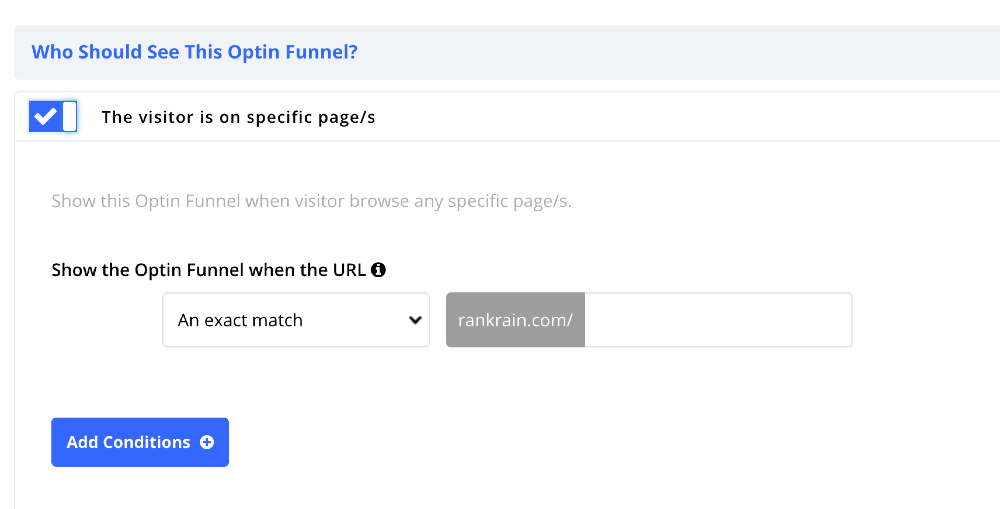
Then click on “Add Conditions” to complete the process. Only visitors to that page would be able to see the popup.
Knowing who you want to target with your campaign helps you create a message that resonates with them.
Map out user flows
A user flow is the steps a prospect takes on your site before conversion. It includes all the pages they have to visit on your website.
Here’s how the user flow for ecommerce and subscription websites looks like:
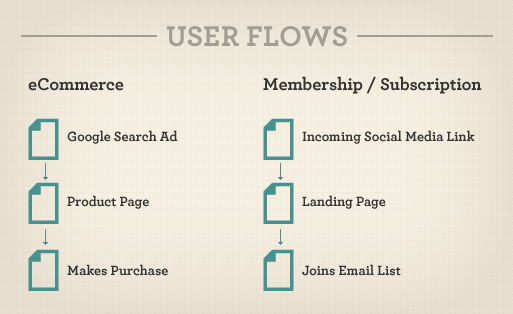
And the user flow can also be different based on the traffic source.
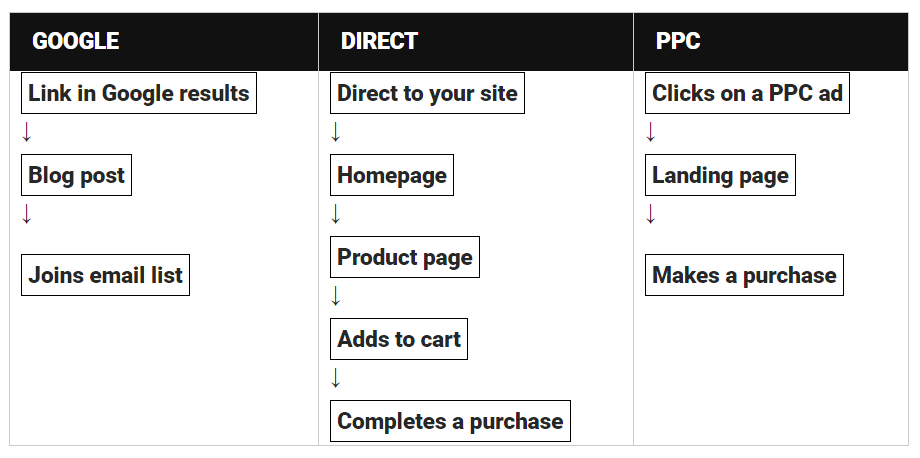
For instance, let’s say you own an app development agency. Your site’s main conversion goal would be to get potential clients to contact you. And that’s the exact goal of Blue Label Labs, a New York app development agency.
When you visit their website, the goal is to get you to visit their contact page. But web users rarely go straight to the contact page the first time they land on a site.
That’s where user flow comes in.
After creating a user flow, you would be able to take visitors through the pages that educate and entertain them while slowly introducing your company, what you do, before asking prospects to contact you.
A user flow lets you take visitors through a number of blog posts or pages before finally asking them to convert. The conversion process could end up with you taking them to a landing page where they give you their email address in return for an ebook.
It could also mean taking them to your About and Contact Us pages where they would be able to provide more information about themselves.
Popups can help you collect the contact information of your visitors faster. They’ll see it on every page on your site.
With OmmiKick, you can create a popup within 5 minutes and publish it on your blog or website. Select one from our popup types, and you’ll see pre-made templates you can start collecting emails with.
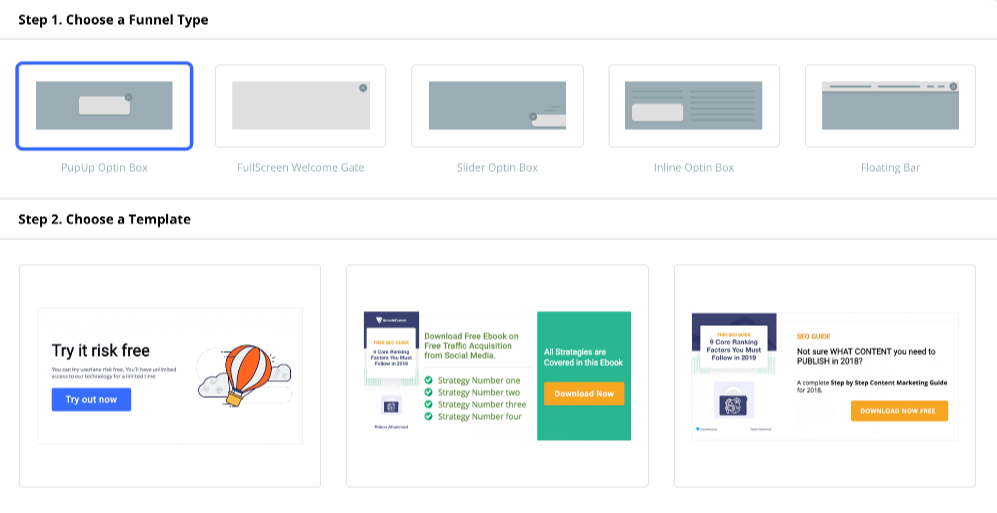
Always segment your leads
This is one of the most critical aspects of marketing automation. No matter the kind of business you run, your target customers would be people with different needs. And some of them may even change as they move closer to buying.
The message you send to each prospect should address their unique needs at the stage they are in their sales journey.
Segment your leads to continue maintaining and developing your relationship with the prospect.
What is lead segmentation?
It means breaking down your leads into smaller lists based on their actions.
You could segment your list based on these factors:
- The page the prospect visited
- The pages they haven’t visited
- The site (source) that referred them
- The kind of device they used to access your website
- The total number of pages they visited
- The number of times they have visited your site
And there are many more ways to segment your list.
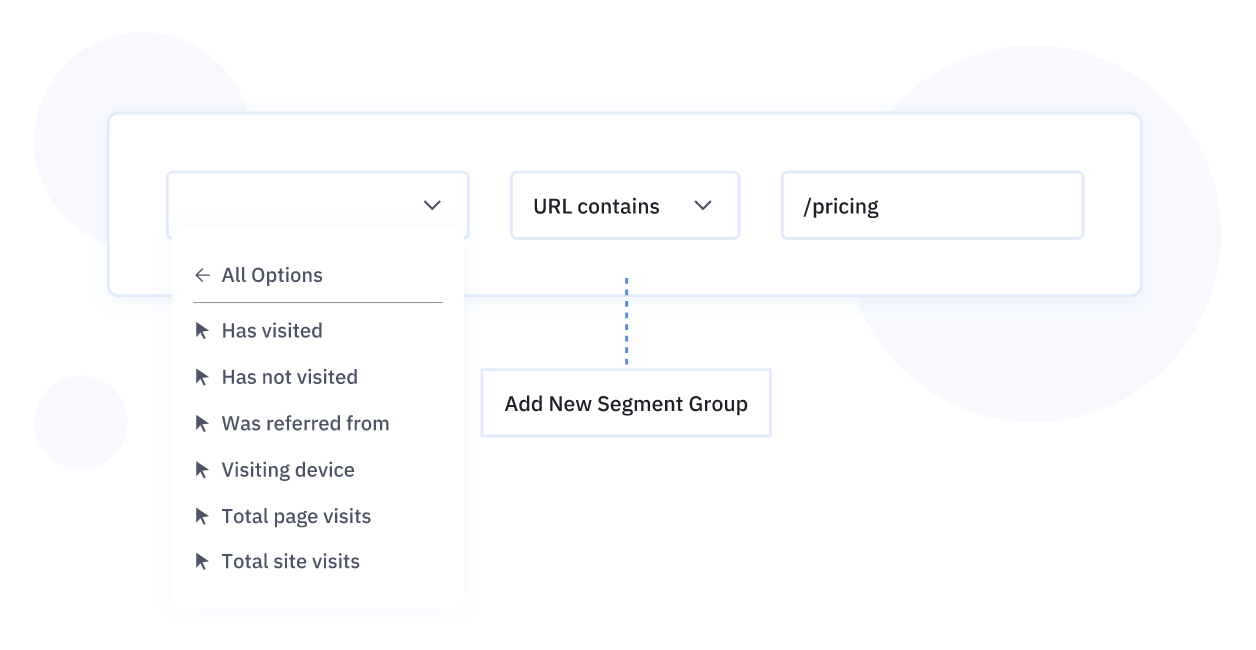
All your leads aren’t the same. Some are more interested than others. And some are more interested in some products and services than others.
With automation, you could quickly weigh the interest of a potential client and target them with messages that match their desires.
Don’t buy an email list
Yes, as they say, the money is in the list. But the money isn’t in a list you bought.
Customers’ emails are a big part of automation. Automation won’t work if you’re buying an email list from marketers or scammers on the web.
The email list you bought has probably been sold to hundreds or thousands of individuals and companies.
You’ll run into trouble with your email marketing automation provider when you buy an email list.
Ensure that every email is collected by you with the user’s consent.
Using a tool like OmniKick, you can build popups that collect email addresses on your site within a few minutes.
Here’s an example of a popup you can create with OmniKick.
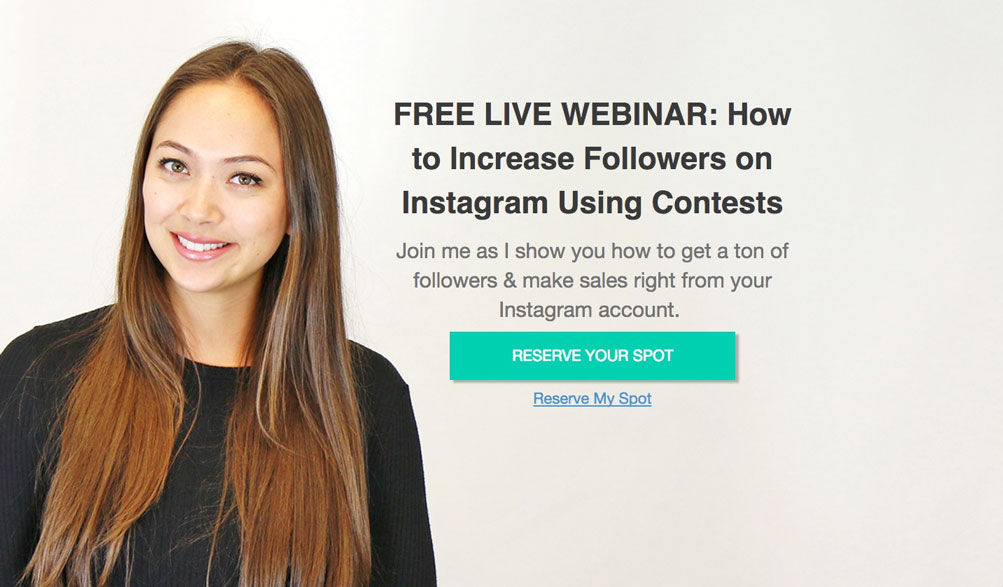
By collecting your emails, customers will recognize your business because they willingly gave you their contact details.
Give something valuable in return for their email
Prospects won’t give you their email addresses simply because you asked. They’ll ask themselves what’s in it for them. Why should they give you their emails?
There must be a compelling reason why they should give you their email.
Most businesses offer something valuable like free e-books, free tools, free trials, guides, and others.
Note that the offer should be interesting enough to make prospects give you their contact details.
To make marketing automation work, you need emails. And to collect these emails, you need to offer customers something valuable.
For example, Nerd Fitness published an article titled “5 Best Strength Training Workout Routines For Beginners (Home & Gym).” On the blog, there’s a relevant guide Nerd Fitness offers its visitors.
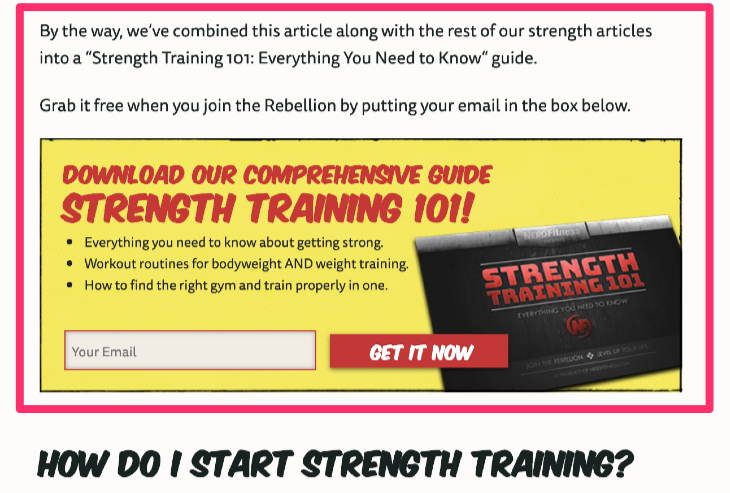
Giving something away to collect emails is just the first step. Once you have prospects’ email addresses, you will be able to use the power of marketing automation to turn them from strangers to customers and advocates of your business.
Send automated campaigns
Email automation is different from one-off campaigns like newsletters and announcements. Automated email campaigns don’t go out to everyone in your email list.
Automated campaigns are only sent to subscribers when they meet a certain trigger. For example, if someone joins your email list, and didn’t read your first welcome email message, that person may not be ready to buy from you.
So, their relationship is different from someone who read your first welcome email message.
Automated campaigns let you recognize people who are ready to buy your product or service.
You can send an automated campaign to a customer who bought six months ago. Modcloth sends an automated six-month anniversary email. A coupon was included in the message.
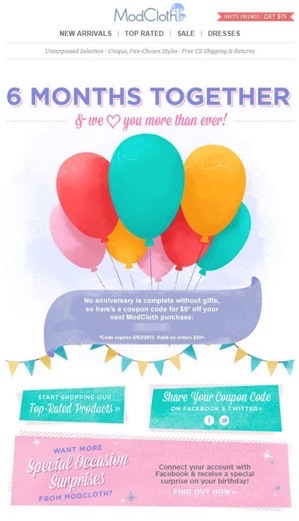
You can also send milestone emails like birthdays, join dates, and other specific milestones. The emails are entirely automated. You set it up once, and every customer that hits the trigger will receive the message.
Get rid of inactive leads or subscribers
Email automation lets you recognize and remove inactive leads and subscribers. This is a powerful feature most marketers don’t often talk about.
It’s normal for some people to lose interest in your messages and brand. There are different reasons for this. It could be that the customer doesn’t need your product, or service again or they have moved on.
Keeping inactive leads or subscribers like this in your list would lower your overall email open rates. A high open rate ensures that providers like Gmail and Outlook continue to trust you, and your messages are delivering into the inbox or primary folder.
If your open rates are too low, Gmail and Outlook won’t trust you, and your messages might end up in the spam or promotion folder.
To avoid this, it’s recommended that you only keep subscribers and leads that are still opening your emails. If a subscriber hasn’t opened your email in the past six months, you should delete them.
Before you proceed to delete, you could send them one final message asking them to open and click a link to re-activate their email subscription.
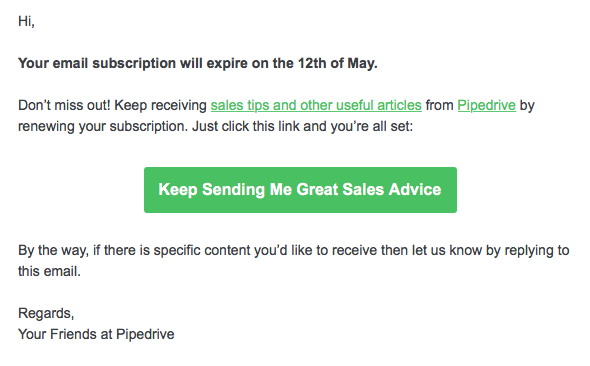
If a subscriber opens the email and clicks the link, it means they want to continue receiving emails from you.
Make your messages feel personal
No one likes being marketed to, both online and offline. Your job as a marketer is to create an experience that makes the prospect feel like you’re talking to them. Automation can help you achieve that.
Automation helps you personalize your emails beyond the first name of the prospect. According to a survey, 94% of companies say that personalization is critical to their current and future success.
So, how do you personalize your email campaigns using automation?
Firstly, relevance. Your email message should be relevant to the subscribers’ needs or problems.
Let’s assume that you run a marketing agency and sell multiple marketing services. If your subscriber was interested in Facebook marketing, they shouldn’t receive content about search engine optimization because it’s irrelevant to their needs.
And here’s another example of relevance.
If you run a fashion shop where you sell both male and female clothes, male subscribers should only receive messages that promote men’s wear. The same is true for women.
With an automation tool, you can select the gender of who you want to receive your email campaigns.
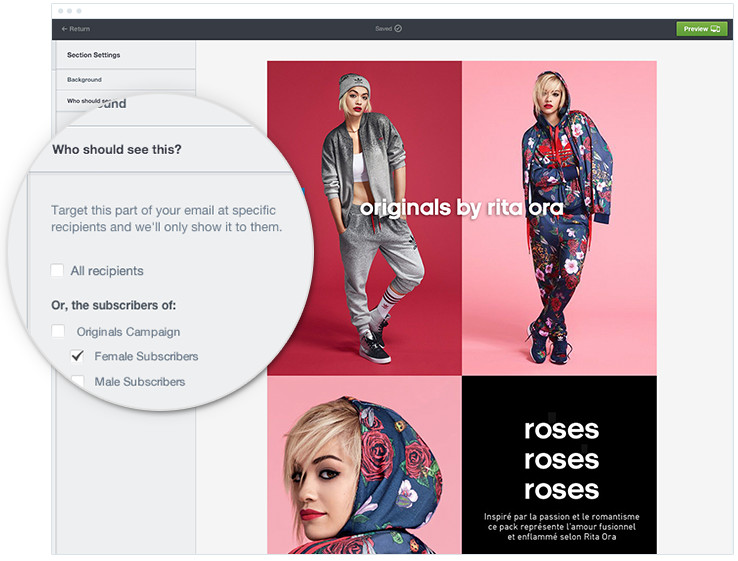
Second, your email should come from a person. People are more likely to trust an email that comes from a real person than a business. The picture should show that it’s coming from a personal email with a name and face to prove it.
The person could be one of your employees or yourself.
Third, the name of the recipient should be in the subject line. The subject line should be so captivating that the subscriber has no choice but to open it.
For example, this email included the first name of the recipient.
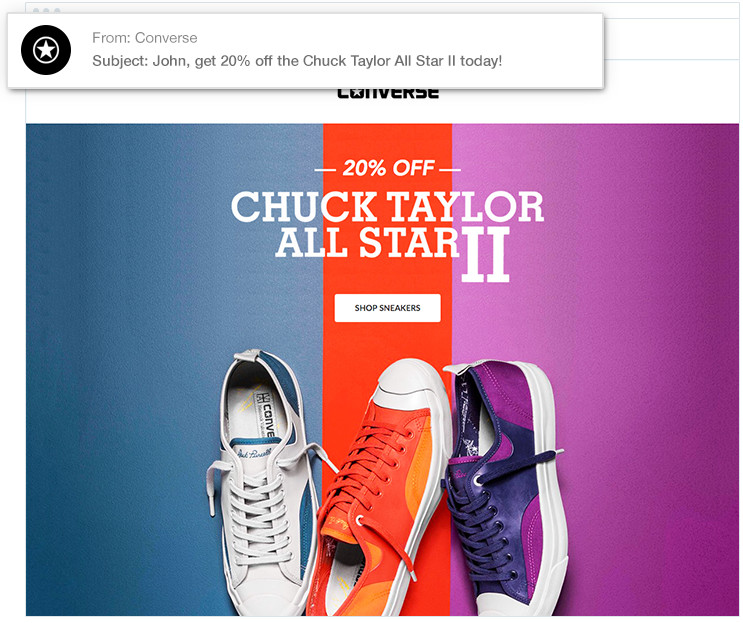
Refine your automation campaigns regularly
You can do many things with little effort when you use automation. Still, you shouldn’t set up your campaigns and let them run forever.
The effectiveness of your automation campaigns decreases each passing month. Review your campaigns regularly. That could be weekly, monthly, or quarterly.
Ask yourself if the campaign is still relevant. Ask yourself what you can do to improve the active campaigns.
Automation is great and effective. It saves you time and makes you more sales. But you should still continue to improve it.
For example, the popups you created last year may not be driving as many sign-ups as they did when you first created them.
So, what do you do?
Create new offers to add to your popups. Test new CTA buttons, color, and copy. Change the images. Never stop tweaking your campaigns. They’re never perfect the first time you launched them.
Conclusion
The best marketing teams use automation. And they follow the principles laid out in this article. If you want to increase sales, you need automation.
OmniKick is a powerful tool for increasing social media followers and subscribers. Collecting customers’ emails is easy when you use OmniKick. Start your free trial today.
